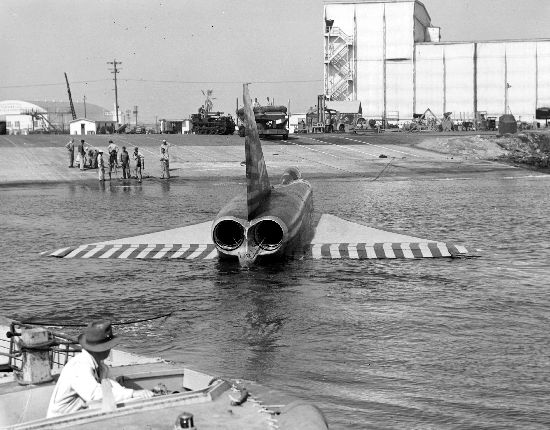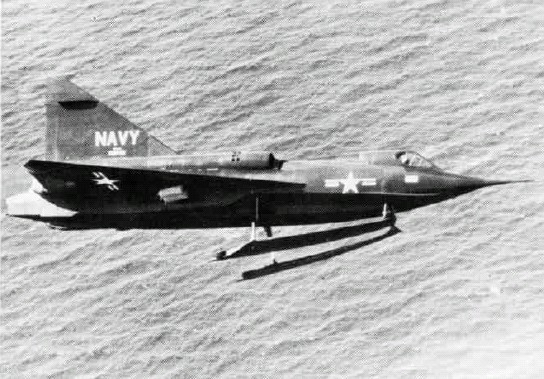Convair Sea Dart (The only supersonic seaplane)

Navy Strategy, the need of a supersonic interceptor plane in time when Jet engines were not as advanced as now. The need of an aircraft that could take off from the sea or a floating deck. There were many options and ideas that came up, planes powered with propellers were still being used in aircraft carriers, so jet engines aircraft were difficult to take off from the short runway of these carriers.
In 1950, Navy engineers proposed a delta-winged supersonic fighter, the Sea Dart, able to take off and land on water. Therefore, this idea gave a solution to the facility issues of military offshore operation offering a great flexibility.

When designing the aircraft, it was intended to be fitted with a Jet engine XJ46 turbojet, but the prototype of the Sea Dart was ready before the XJ46, so the 3,400-pound thrust Westinghouse J34-WE-32s engine was installed on the Sea Dart. This engine did not give the required power to reach the supersonic speed.

The aircraft Sea Dart generated more problems when testing, at water the trailing edge of its wings brushing the water. The hydro-skis did not perform as expected on landing and take-off. The Sea Dart Program suffered changes and even the Navy did not want the asked aircraft quantity from seven to 22 to, finally, just five.

On August 3, 1954, Richbourg, a test pilot took the aircraft through the sound barrier. Achieving the record of the first seaplane that exceeded the speed of sound this model with J46 turbojets. Unfortunately, Richbourg was killed on November 4 in front of the media and demonstrating the Sea Dart flight, when the aircraft disintegrated in midair as a result of pilot-induced pitch oscillations “are sustained or uncontrollable oscillations”. After the crash the Sea Dart operation was suspended.

The Navy was losing interest, problems with supersonic fighters on carrier decks having been solved, then the Sea Dart Program was changed to experimental status, all the production was cancelled.
Currently you can see one YF2Y-1 Sea Dart, Bureau Number 135763, on display at the San Diego Air & Space Museum in Balboa Park.
References:
http://www.joebaugher.com/navy_fighters/f7.html.
ttps://www.defensemedianetwork.com/stories/xf2y-1yf2y-1-sea-dart-a-jet-fighter-on-water-skis/
Cover Photo:
fighterjetsworld.com
Discover more from Aviation for Aviators
Subscribe to get the latest posts to your email.


 English
English 

